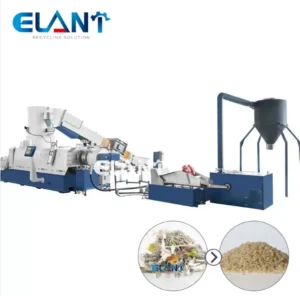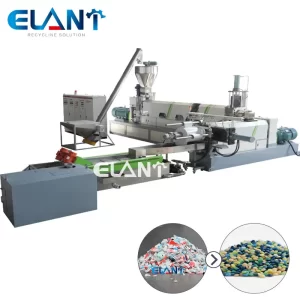Pelletizing machines play a crucial role in various industries, including plastics recycling, biomass energy production, and fertilizer manufacturing. These machines transform raw materials into uniform pellets, which are easier to handle, transport, and use. Understanding the workings of a pelletizing machine not only highlights its significance but also provides insight into its efficiency and technological advancements.
What is a Pelletizing Machine?
A pelletizing machine is industrial equipment designed to convert raw materials into small, uniformly-sized pellets. These machines are widely used in manufacturing processes for plastics, wood, feedstock, fertilizers, and more. The size, shape, and consistency of the pellets produced depend on the machine’s configuration and the material being processed.
Key Components of a Pelletizing Machine
To understand how a pelletizing machine works, it is essential to know its primary components:
Feeding System
The feeding system introduces raw material into the machine. Depending on the material type, this can be a hopper, conveyor belt, or vacuum feeder. A steady and controlled feeding process ensures consistent pellet quality.
Die and Roller Assembly
The die and roller assembly is the heart of the pelletizing machine. The die contains multiple perforations, shaping the raw material into pellets as it passes through. Rollers exert pressure on the raw material, forcing it through the die openings.
Cutting Mechanism
Once the material is extruded through the die, a cutting blade trims the extruded material into uniform pellet sizes. Adjustable cutting speeds allow customization of pellet length.
Cooling System
Pellets often emerge from the machine at high temperatures due to friction during the extrusion process. A cooling system, typically air or water-cooled, solidifies and hardens the pellets.
Discharge System
The discharge system collects finished pellets, preparing them for packaging or further processing. It may include conveyors or collection bins.

How Does the Pelletizing Process Work?
The pelletizing process involves multiple steps that work seamlessly to produce high-quality pellets.
Step 1: Material Preparation
Before feeding raw material into the pelletizing machine, it must be properly prepared. For plastics, this may involve shredding or grinding. For biomass, materials like wood chips or agricultural waste must be dried to the appropriate moisture content. This ensures uniform processing and prevents damage to the equipment.
Step 2: Feeding the Material
The prepared material is fed into the machine through the feeding system. Precision feeding is critical to avoid overloading or underutilizing the machine, which could impact pellet quality.
Step 3: Compression and Extrusion
Inside the machine, the material enters the die and roller assembly. Rollers press the material against the die, where it is compressed and forced through the perforations. High pressure and heat generated during this stage help bind the material, ensuring pellet durability.
Step 4: Cutting to Size
As the material extrudes from the die, a cutting blade trims it into uniform pellet lengths. The cutting speed can be adjusted to achieve the desired pellet size, catering to specific industry requirements.
Step 5: Cooling and Solidification
The freshly cut pellets are hot and malleable. Cooling systems quickly reduce the temperature, solidifying the pellets into their final form. Proper cooling prevents pellet deformation and ensures consistent quality.
Step 6: Collecting and Storing Pellets
Once cooled, the pellets are collected through the discharge system. They are then packaged or stored for distribution or further use.
Applications of Pelletizing Machines
Pelletizing machines serve a wide array of industries:
Plastics Recycling: Converting shredded plastic waste into uniform pellets for reuse in manufacturing.
Biomass Energy: Processing agricultural residues, sawdust, or wood chips into pellets used as fuel.
Fertilizer Production: Creating uniform fertilizer granules for efficient application in agriculture.
Animal Feed: Producing feed pellets tailored to livestock dietary needs.
Advantages of Using a Pelletizing Machine
Uniformity
Pelletizing ensures that materials are processed into consistent sizes and shapes, improving handling and usability.
Efficiency
The process reduces material waste and enhances productivity in manufacturing processes.
Enhanced Storage and Transport
Pellets are compact, reducing storage space and transportation costs.
Environmental Benefits
Pelletizing facilitates recycling and efficient resource utilization, contributing to sustainability.

Maintenance and Troubleshooting
To ensure optimal performance, regular maintenance is necessary:
Lubrication: Keeping moving parts well-lubricated reduces wear and tear.
Die Cleaning: Preventing material buildup in die holes maintains extrusion efficiency.
Blade Replacement: Worn cutting blades can lead to uneven pellet sizes.
Common troubleshooting tips include:
Uneven Pellet Size: Check for die obstructions or worn rollers.
Overheating: Verify cooling system functionality and material moisture content.
Blockages: Ensure proper material preparation to avoid clogs.
Conclusion
Pelletizing machines are indispensable tools in modern industrial processes, offering unparalleled efficiency and versatility. By understanding how they work and the various types available, businesses can leverage this technology to optimize their operations. Proper maintenance and adherence to operational guidelines ensure long-lasting performance and consistent pellet quality, making these machines a cornerstone of industrial innovation.
